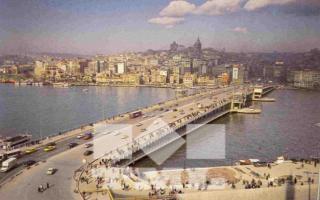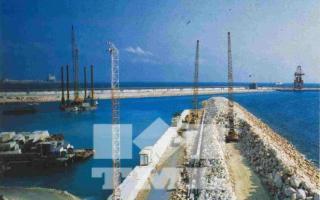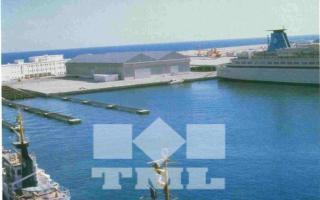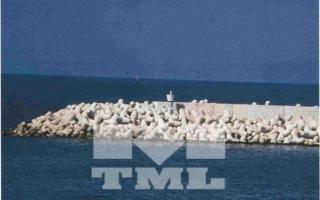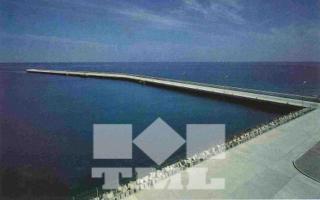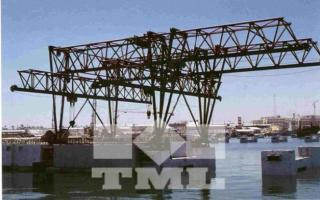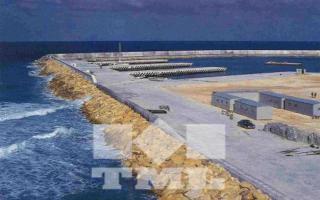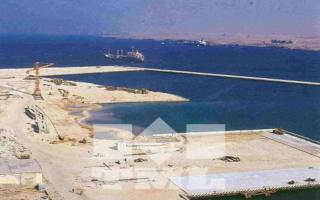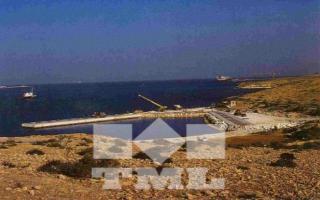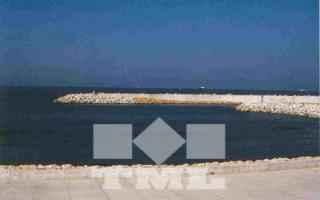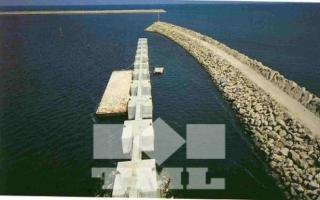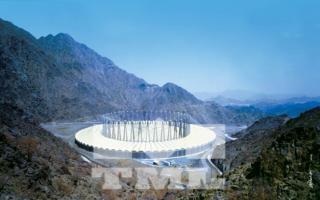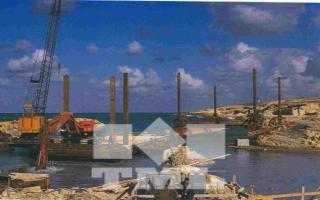Sidi Belal Harbour
Sidi Belal Harbour
Client : Military Works and Property Department, Libyan Naval Forces
Start Date : March 1977
Finish Date : August 1979
Key features of Work Scope:
The project comprised of the construction of a base, incorporating main and lee breakwaters and a system of quay and finger piers to accommodate naval vessels.
Shifting sand masses on the sea floor resulting from strong undercurrents dictated the methods of construction and types of construction for this project. The typical cross section of rubble mound breakwater composed of a 0 to 1 ton core, 2 to 4 tons secondary armor, a primary armor of 15 and 10 tonne tetrapods and a reinforced concrete parapet wall with 6,5 m elevation from M.S.L. The length of the main breakwater was 680 m. at a depth of 7,5 m. The lee breakwater had a length of 250 m at a depth of 7,5 m. The quantity of rock used was 180,000 m3.
Essentially 3 types of structural elements, reinforced concrete caissons, concrete blocks, and sheet piling were used to suit local conditions in forming the system of quays and finger piers. 3 finger piers, 65 m. long each, and a 160 m long quay was constructed with 22 caissons measuring 15,9 x 7,5 x 6,3 m utilizing 6,000 m3 of concrete. A 230 m. long quay was constructed by driving Larssen III type sheet piles with a vibrating hammer at water depths 4,5 m and 5,5 m. Sheet piles were tied to the toe of R.C. parapet wall with tie rods. Another 350 long quay was constructed by placing 600 concrete blocks, 20 tons each, at water depths of 4,5 m and 2,5 m. Quantity of concrete for blocks and cope beam was 6,500 m3. In order to set blocks at proper level, 15000 m3 of underwater rock excavation was carried out by drilling and blasting. The layer of crushed stone under the blocks was placed by means of jack-up platforms. Caisson units were precast on land, launched with custom made gantry cranes, towed and positioned on the previously prepared foundation beds.
The area works involved the construction of a 1,200 m concrete services channel, filling and compacting 150,000 m3 of sand.

